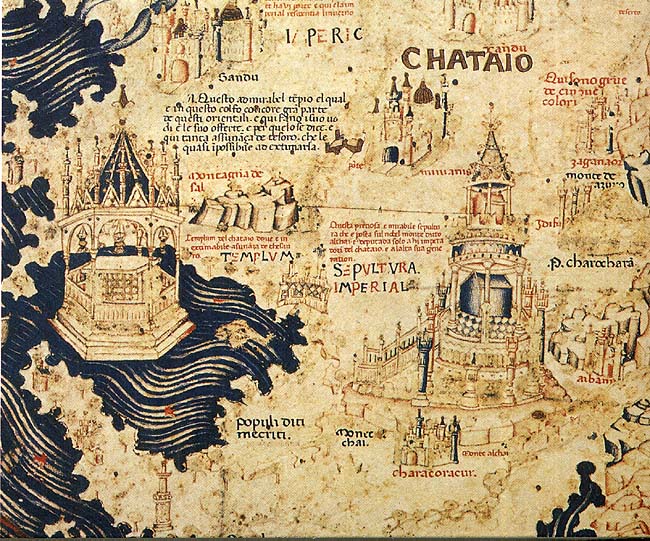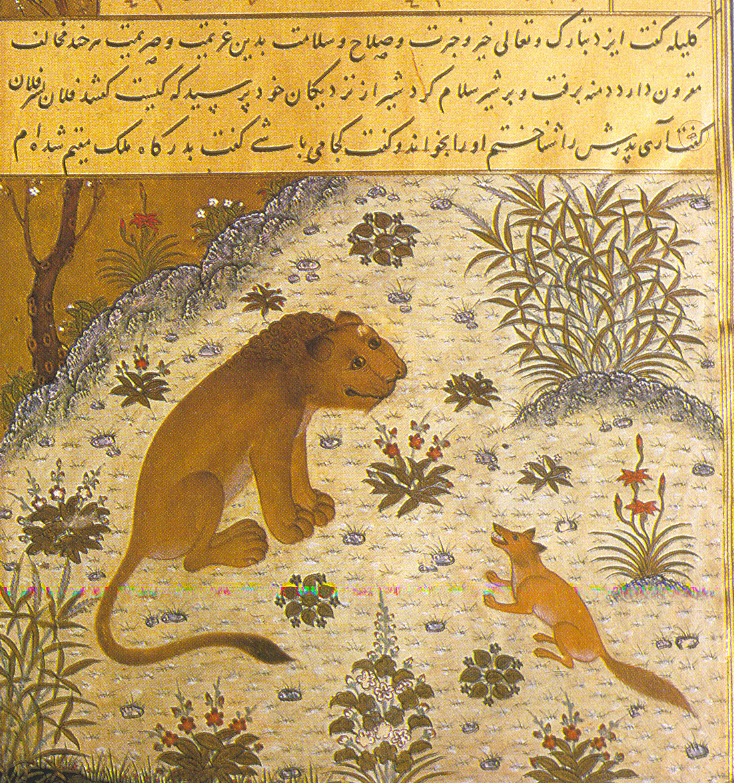|
Divan-i-Albisa
Divan-i-Albisa (Diwan-i-Albisa) is a 15th-century Persian language manuscript authored by Nizam al-Din Mahmud Qari of Yazd. Divan-i-Albisa is a collection of poems about clothes. It suggests on the origins of textiles and their importation into Persian markets from "Asia (Rum), Cathay (Khita), and Hindustan". See also * Salu (cloth) * Diwan (poetry) In Islamic culture Islamic culture and Muslim culture refer to cultural practices which are common to historically Islamic people. The early forms of Muslim culture, from the Rashidun Caliphate to the early Umayyad period and the early Abbas ... References Further reading Divan-i-Albisa Persian literature Persian poems 15th-century Persian books {{Lit-stub ... [...More Info...] [...Related Items...] OR: [Wikipedia] [Google] [Baidu] |
Salu (cloth)
Salu (variously transcribed in English as ''sālū'', ''saloo'', and archaically, ''shallee'', ''shalloo'', ''shella'', and ''sallo'') is a type of twill cloth, woven from cotton and dyed red, originally made in India. Prior to the introduction of modern industrial techniques, it was produced exclusively hand spun (''khaddar'') yarns with locally-available dyes. Salu is one of seven cotton cloths explicitly mentioned in the 16th century Mughal record ''Ain-i-Akbari'', together with '' khasa'', '' tansukh'', ''doriya'', '' bafta'', ''dupatta'', and ''panchtoliya''. History & description Salu appears to be an ancient fabric; trade references to the Persian market from Hindustan in the 14th century are documented in the '' Divan-i-Albisa'' by Mawlānā Mahmud Nizan Qari. According to a 16th-century Mughal Empire record (Ain-i -Akbari), Salu cost two mohur per piece at that time. The original ''salu'' was made in India from materials sourced entirely in India, but a dyeing proc ... [...More Info...] [...Related Items...] OR: [Wikipedia] [Google] [Baidu] |
Diwan (poetry)
In Islamic culture Islamic culture and Muslim culture refer to cultural practices which are common to historically Islamic people. The early forms of Muslim culture, from the Rashidun Caliphate to the early Umayyad period and the early Abbasid period, were predomi ...s of the Middle East, North Africa, Sicily and South Asia, a Diwan ( fa, دیوان, ''divân'', ar, ديوان, ''dīwān'') is a collection of Poetry, poems by one author, usually excluding his or her long poems (Mathnawi (poetic form), mathnawī). The vast majority of Diwan poetry was Lyric poetry, lyric in nature: either ghazals or ''gazel''s (which make up the greatest part of the repertoire of the tradition), or ''kasîde''s. There were, however, other common genres, most particularly the ''mesnevî'', a kind of Courtly romance, verse romance and thus a variety of narrative poetry; the two most notable examples of this form are the ''Layla and Majnun'' (ليلى و مجنون) of Fuzûlî and the ''Hüsn ... [...More Info...] [...Related Items...] OR: [Wikipedia] [Google] [Baidu] |
Persian Language
Persian (), also known by its endonym and exonym, endonym Farsi (, ', ), is a Western Iranian languages, Western Iranian language belonging to the Iranian languages, Iranian branch of the Indo-Iranian languages, Indo-Iranian subdivision of the Indo-European languages. Persian is a pluricentric language predominantly spoken and used officially within Iran, Afghanistan, and Tajikistan in three mutual intelligibility, mutually intelligible standard language, standard varieties, namely Iranian Persian (officially known as ''Persian''), Dari, Dari Persian (officially known as ''Dari'' since 1964) and Tajik language, Tajiki Persian (officially known as ''Tajik'' since 1999).Siddikzoda, S. "Tajik Language: Farsi or not Farsi?" in ''Media Insight Central Asia #27'', August 2002. It is also spoken natively in the Tajik variety by a significant population within Uzbekistan, as well as within other regions with a Persianate society, Persianate history in the cultural sphere of Greater Ira ... [...More Info...] [...Related Items...] OR: [Wikipedia] [Google] [Baidu] |
Yazd
Yazd ( fa, یزد ), formerly also known as Yezd, is the capital of Yazd Province, Iran. The city is located southeast of Isfahan. At the 2016 census, the population was 1,138,533. Since 2017, the historical city of Yazd is recognized as a World Heritage Site by UNESCO. Because of generations of adaptations to its desert surroundings, Yazd has a unique Persian architecture. It is nicknamed the "City of Windcatchers" ( ''Shahr-e Badgirha'') from its many examples. It is also very well known for its Zoroastrian fire temples, ab anbars (cisterns), qanats (underground channels), yakhchals (coolers), Persian handicrafts, handwoven cloth (''Persian termeh''), silk weaving, Persian cotton candy, and its time-honored confectioneries. Yazd is also known as City of Bicycles, because of its old history of bike riders, and the highest number of bicycles per capita in Iran. It is reported that bicycle culture in Iran originated in Yazd as a result of contact with European visitors an ... [...More Info...] [...Related Items...] OR: [Wikipedia] [Google] [Baidu] |
Textile
Textile is an umbrella term that includes various fiber-based materials, including fibers, yarns, filaments, threads, different fabric types, etc. At first, the word "textiles" only referred to woven fabrics. However, weaving is not the only manufacturing method, and many other methods were later developed to form textile structures based on their intended use. Knitting and non-woven are other popular types of fabric manufacturing. In the contemporary world, textiles satisfy the material needs for versatile applications, from simple daily clothing to bulletproof jackets, spacesuits, and doctor's gowns. Textiles are divided into two groups: Domestic purposes onsumer textilesand technical textiles. In consumer textiles, aesthetics and comfort are the most important factors, but in technical textiles, functional properties are the priority. Geotextiles, industrial textiles, medical textiles, and many other areas are examples of technical textiles, whereas clot ... [...More Info...] [...Related Items...] OR: [Wikipedia] [Google] [Baidu] |
Persia
Iran, officially the Islamic Republic of Iran, and also called Persia, is a country located in Western Asia. It is bordered by Iraq and Turkey to the west, by Azerbaijan and Armenia to the northwest, by the Caspian Sea and Turkmenistan to the north, by Afghanistan and Pakistan to the east, and by the Gulf of Oman and the Persian Gulf to the south. It covers an area of , making it the 17th-largest country. Iran has a population of 86 million, making it the 17th-most populous country in the world, and the second-largest in the Middle East. Its largest cities, in descending order, are the capital Tehran, Mashhad, Isfahan, Karaj, Shiraz, and Tabriz. The country is home to one of the world's oldest civilizations, beginning with the formation of the Elamite kingdoms in the fourth millennium BC. It was first unified by the Medes, an ancient Iranian people, in the seventh century BC, and reached its territorial height in the sixth century BC, when Cyrus the Gre ... [...More Info...] [...Related Items...] OR: [Wikipedia] [Google] [Baidu] |
Asia
Asia (, ) is one of the world's most notable geographical regions, which is either considered a continent in its own right or a subcontinent of Eurasia, which shares the continental landmass of Afro-Eurasia with Africa. Asia covers an area of , about 30% of Earth's total land area and 8.7% of Earth's total surface area. The continent, which has long been home to the majority of the human population, was the site of many of the first civilizations. Its 4.7 billion people constitute roughly 60% of the world's population. In general terms, Asia is bounded on the east by the Pacific Ocean, on the south by the Indian Ocean, and on the north by the Arctic Ocean. The border of Asia with Europe is a historical and cultural construct, as there is no clear physical and geographical separation between them. It is somewhat arbitrary and has moved since its first conception in classical antiquity. The division of Eurasia into two continents reflects East–West cultural, ling ... [...More Info...] [...Related Items...] OR: [Wikipedia] [Google] [Baidu] |
Cathay
Cathay (; ) is a historical name for China that was used in Europe. During the early modern period, the term ''Cathay'' initially evolved as a term referring to what is now Northern China, completely separate and distinct from China, which was a reference to southern China. As knowledge of East Asia increased, Cathay came to be seen as the same polity as China as a whole. The term ''Cathay'' became a poetic name for China. The name ''Cathay'' originates from the word '' Khitan'', a name of a para-Mongolic nomadic people who ruled the Liao dynasty in northern China from 916 to 1125, and who later migrated west after they were overthrown by the Jin dynasty to form the Qara Khitai (Western Liao dynasty) for another century thereafter. Originally, this name was the name applied by Central and Western Asians and Europeans to northern China; the name was also used in Marco Polo's book on his travels in Yuan dynasty China (he referred to southern China as '' Mangi''). Od ... [...More Info...] [...Related Items...] OR: [Wikipedia] [Google] [Baidu] |
Hindustan
''Hindūstān'' ( , from '' Hindū'' and ''-stān''), also sometimes spelt as Hindōstān ( ''Indo-land''), along with its shortened form ''Hind'' (), is the Persian-language name for the Indian subcontinent that later became commonly used by its inhabitants in the Hindi–Urdu language. Hindustan was the Persian word for ''India'', but when introduced to the subjects under Persianate rule, the subsequent culture which resulted from these events gave it another specific meaning that of the cultural region between the river Sutlej (end of Northwestern India) and the city Varanasi (start of Eastern India). As the area where Ganga-Jamuni Tehzeeb and the Hindustani language traces its origins, it corresponds to the plains where the river Yamuna flows or the regions/states encompassing Haryana, Delhi, Harit Pradesh, and Awadh. Other toponyms for the subcontinent include '' Jambudvīpa'' and ''Bharata Khanda''. Since the Partition of India in 1947, although limitedly, ''H ... [...More Info...] [...Related Items...] OR: [Wikipedia] [Google] [Baidu] |
Persian Literature
Persian literature ( fa, ادبیات فارسی, Adabiyâte fârsi, ) comprises oral compositions and written texts in the Persian language and is one of the world's oldest literatures. It spans over two-and-a-half millennia. Its sources have been within Greater Iran including present-day Iran, Iraq, Afghanistan, the Caucasus, and Turkey, regions of Central Asia (such as Tajikistan) and South Asia where the Persian language has historically been either the native or official language. For example, Rumi, one of the best-loved Persian poets, born in Balkh (in modern-day Afghanistan) or Wakhsh (in modern-day Tajikistan), wrote in Persian and lived in Konya (in modern-day Turkey), at that time the capital of the Seljuks in Anatolia. The Ghaznavids conquered large territories in Central and South Asia and adopted Persian as their court language. There is thus Persian literature from Iran, Mesopotamia, Azerbaijan, the wider Caucasus, Turkey, Pakistan, Bangladesh, India, Tajik ... [...More Info...] [...Related Items...] OR: [Wikipedia] [Google] [Baidu] |
Persian Poems
Persian may refer to: * People and things from Iran, historically called ''Persia'' in the English language ** Persians, the majority ethnic group in Iran, not to be conflated with the Iranic peoples ** Persian language, an Iranian language of the Indo-European family, native language of ethnic Persians *** Persian alphabet, a writing system based on the Perso-Arabic script * People and things from the historical Persian Empire Other uses * Persian (patience), a card game * Persian (roll), a pastry native to Thunder Bay, Ontario * Persian (wine) * Persian, Indonesia, on the island of Java * Persian cat, a long-haired breed of cat characterized by its round face and shortened muzzle * The Persian, a character from Gaston Leroux's ''The Phantom of the Opera'' * Persian, a generation I Pokémon species * Alpha Indi, star also known as "The Persian" See also * Persian Empire (other) * Persian expedition (other) or Persian campaign * Persian Gulf (other) ... [...More Info...] [...Related Items...] OR: [Wikipedia] [Google] [Baidu] |






